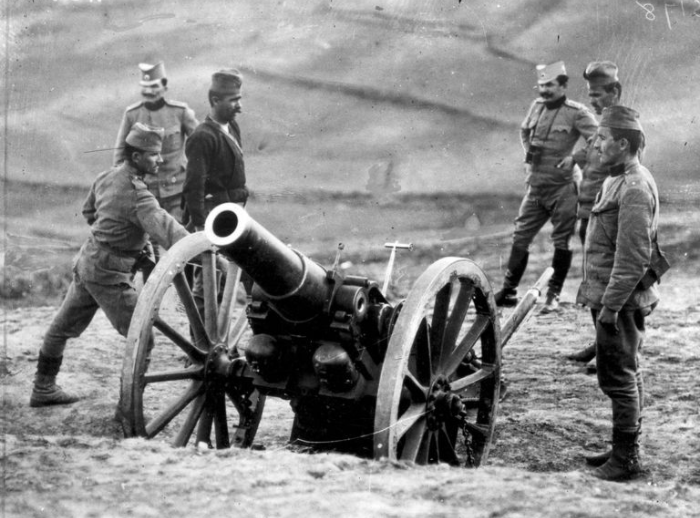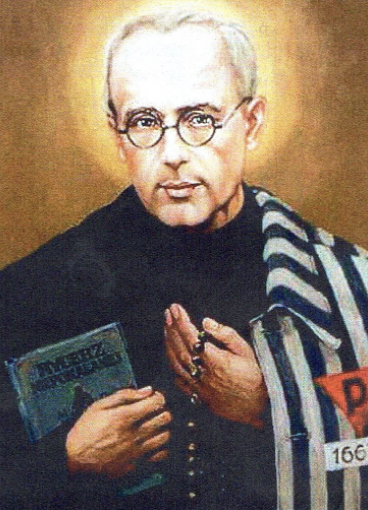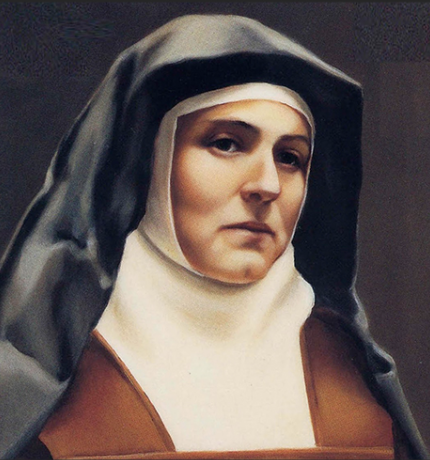The 20th century was distinguished by scientific and technological progress, often marred by war, and lack of respect for the human person.
The 20th century began with exploitation of native peoples in European colonies, as well as imperial rivalries. The was the century of concentration camps, at the very beginning, the concentration camps of the British in South Africa during the Boer War (1899-1902). The murder of the heir to the Austrian throne, Archduke Franz Ferdinand, in Sarajevo by a Serbian nationalist, led to the First World War, the so-called Great War. The Russian Revolution in 1917 eventually led to murderous totalitarian regimes, not only in what became the USSR, but in Eastern Europe, North Korea, China, Cambodia, and elsewhere, the effects of which are still present today. In 1931 the Japanese invaded Manchuria, and, in 1937 China. From 1936 to 1939 the Spanish Civil War was fought. The Molotov-Ribbentrop pact between the USSR and Nazi Germany was the precursor to the division of Poland, the Second World War, and the Iron Curtin in Eastern Europe.

Auschwitz-Birkenau
European Jews (and others including Gypsies and Poles) were systematically murdered on an industrial scale, using “modern” technology. The experience of the Holocaust has given rise to a whole genre of literature, for instance, John Boyne’s The Boy in the Striped Pyjamas, Anne Frank’s Diary of a Young Girl, Viktor Frankel’s Man’s Search for Meaning, Primo Levi’s If This is a Man. The experience of the Holocaust has given rise to a range of theological responses, both Jewish and Christian. Can one believe in a loving God after Auschwitz?
Bombing of Civilians
The 20th century was, arguably, the first time in modern history when warfare involved systematic “industrial” killing of non-combatants, particularly by dropping of bombs from planes. Civilians living in German cities, including Berlin, Cologne, Dresden, Essen, Hamburg, Hanover, Leipzig, Munich and elsewhere, were deliberately bombed. Approximately 410,000 German civilians were killed by Allied air raids. Atomic bombs were deliberately dropped on civilian populations at Hiroshima and Nagasaki.
Contrast
There is a contrast between this disregard of human dignity, and human rights, and the life of St Maximilian Kolbe whose feast-day we celebrate on 14 August. St Maximilian Kolbe (1894-1941), a Polish Franciscan priest, the son of a German father and a Polish mother, born in Russia, was killed by injection of carbolic acid, the last survivor of ten prisoners whom the Auschwitz Camp authorities had sought to starve to death in retribution for the escape of a prisoner.

Substitute for Another Prisoner
Kolbe volunteered to substitute for another prisoner (whom he did not know) who had been selected to be starved to death, but who had protested that he had a wife and children. Kolbe took the other man’s place, encouraging the starving prisoners by his prayer and example.
World of Isms
Kolbe was ordained in 1918 at a time when Poland became free and independent for the first time in 120 years. Kolbe’s life was lived in a world marked by the “isms” of the twentieth century- anarchism, capitalism, communism, fascism, nationalism, Nazism, racism – most of which were an assault on human dignity. Many of the “isms” were utopian attempts to create a new and better world by killing people, or at least by disregarding human dignity, and human rights. By contrast, Kolbe urged personal responsibility – conversion, sorrow for one’s sins, prayer and penance. Kolbe was devoted to Mary Immaculate, a devotion which he spread both amongst Franciscans and amongst the laity.
Mary Immaculate
Kolbe sought to encourage others in love of God, of Christ, and of his Mother, and in Christian living. Kolbe founded a sodality, the Knights of Mary Immaculate, with many members, both in Poland and elsewhere; founded a mass circulation newspaper; founded a community which had adherents living around the Franciscan house at Teresina in Poland, and which produced many publications, as well as conducting a radio station. Kolbe was very much aware of the need for the Church to use modern means of communication. In 1930, Kolbe went to Japan, studied Buddhism and Shintoism, and founded a Japanese language newspaper which spread the Christian message in a way consonant with Japanese culture. So, Kolbe was also aware of the need for the Church to be sensitive to particular cultures. Later, Kolbe returned to Poland for reasons of health. With the German invasion in 1941, the community at Teresina sheltered thousands of refugees, most of them Jews.
Life of Holiness
In 1941 Kolbe, one of the last Franciscans to remain at Teresina, was arrested and taken to the Auschwitz concentration camp. The remarkable act of charity which led to Kolbe’s death could not have occurred in the absence of a prior life of prayer, self-denial, and apostolate-of holiness. It is a measure of St Maximilian Kolbe’s ability to speak to all that a statue of him has been erected above the western door of the world’s principal Anglican church, Westminster Abbey.
Priesthood
Emeritus Pope Benedict XVI (with the agreement of Pope Francis) this year published a short essay on the priesthood. Benedict reflects on the priesthood:
“…we must continually be purified and overcome by Christ so that he is the one who speaks and acts in us, and less and less, we ourselves.”
In many ways, that sums up the priestly life of St Maximilian Kolbe.

Edith Stein
On 9 August the Church celebrates the feast day of St Edith Stein. Edith Stein (1891-1941) grew up in a German Jewish family. She became a professional philosopher, very much influenced by the phenomenology of Edmund Husserl. Despite her brilliance, Stein was disadvantaged because she was a woman. In 1922 Stein, influenced by St Teresa of Avila, was baptised a Catholic. In 1933, with the accession of the Nazis, Stein lost her academic position. Meanwhile, Stein entered a Carmelite monastery in Cologne as Sister Teresa Benedicta of the Cross. The Carmelites transferred Sister Teresa Benedicta of the Cross to the Netherlands to keep her safe from the Nazis. Stein sought to combine the phenomenology of Edmund Husserl and the philosophy St Thomas Aquinas-as well as writing on St John of the Cross. On 20 July 1942 the Dutch Catholic bishops published a pastoral letter condemning Nazi racism. In retaliation the Nazis arrested Jewish converts to Catholicism, including Sister Teresa Benedicta of the Cross. She was transported to Auschwitz, and killed on 9 August 1942.
Openness to Modern Philosophy
Karol Wojtyla/Pope St John Paul II in his encounter with modern philosophy was influenced by the writings of Sister Teresa Benedicta of the Cross. Whilst the thought of St Thomas Aquinas has a particular place in Catholicism, as is evident from St John Paul II’s encyclical Fides et Ratio (1998), the Church is open to the truth wherever it is to be found. Edith Stein exemplifies the Church’s openness to modern philosophy.
St Teresa Benedicta of the Cross
The Divine Liturgy provides the following excerpt from the writings of St Teresa Benedicta of the Cross:
Whoever chooses Christ is dead to the world and the world is dead to him. He bears the wounds of Christ in his body, he is weak and despised by men, but his cause is strong because the strength of God is made perfect in weakness. Knowing this, the disciple of Christ does not merely accept the Cross that has been laid upon him, but he himself crucifies his own self: “Those who belong to Christ Jesus have crucified the flesh with all its passions and desires.” They have fought a hard battle against their nature, so that the life of sin should die within them and the life of the Spirit be given room to flourish. That battle demands the greatest fortitude. But the Cross is not the end: it is lifted up and shows us the way to heaven. It is not merely a sign, but Christ’s undefeated weapon: it is the shepherd’s sling with which the divine David battles the evil Goliath. With it, Christ knocks loudly at the door of heaven and opens it. When these things come to pass the light of God will shine out and all who follow the Crucified will be filled with it.
Two Martyrs of Auschwitz.
These two martyrs of Auschwitz, St Maximilian Kolbe and St Edith Stein, provide a telling contrast to twentieth century “isms”.
Michael McAuley
